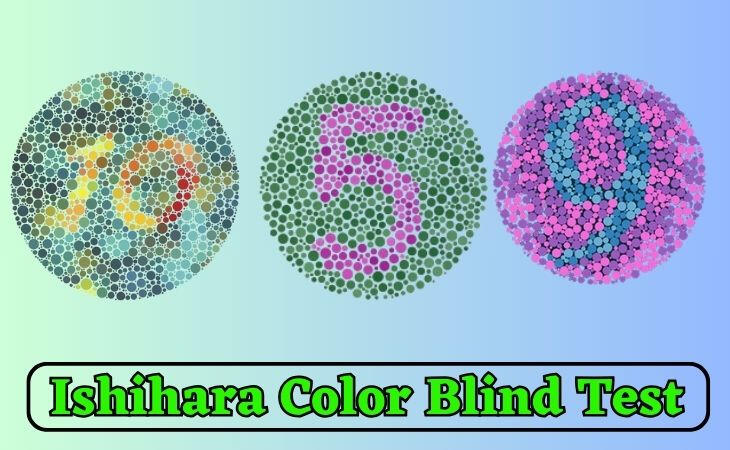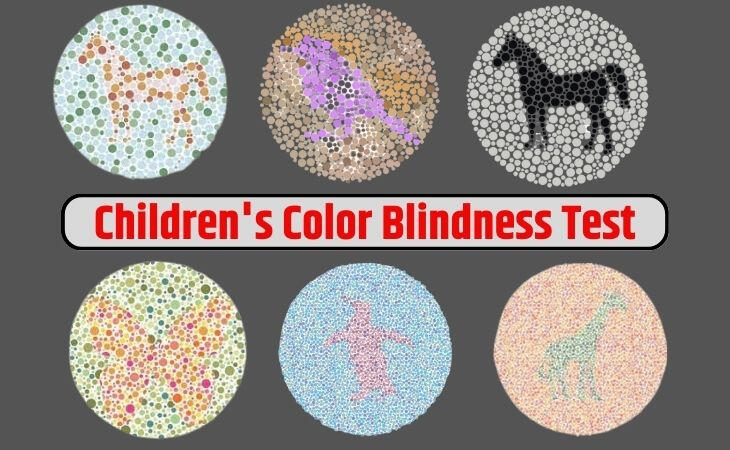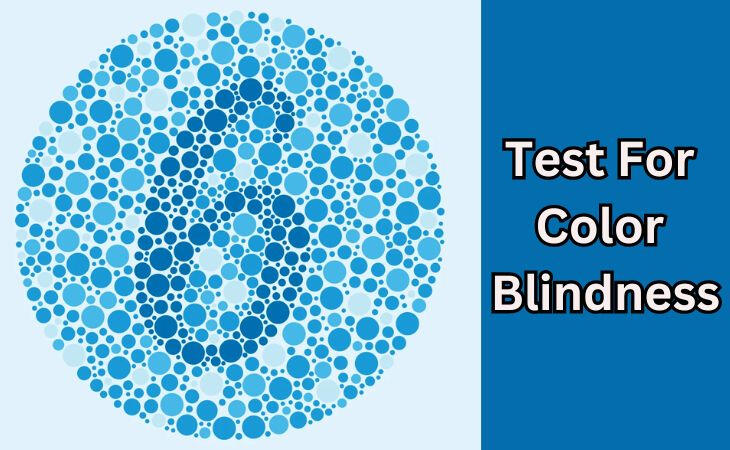Ishihara Test For Color Blindness
The purpose of the Ishihara test is to determine whether or not we have color perception issues.This article explains the Ishihara Test, reverse color blindness tests, and how color blindness tests for kids are conducted. We will also include a video with the results and two examples of online color blindness testing.

How Does The Ishihara Test Work?
A test for color vision deficiencies is the Ishihara color blindness test. Dr. Shinobu Ishihara developed the most popular color vision test in history, which has been in use since 1917.The Ishihara plates are used in this color vision impairment test to identify red and green color blindness. Click here to learn more about the many forms of color blindness and what color blindness is.The Ishihara test involves looking at 38 plates that have a circle printed on them. The circle can be made up of different colored dots, wavy lines, or a number in the middle.
According To The College Of The Optometrists, The Ishihara Plates Are Made Up Of Five Distinct Groups:
Group 1: The sheet is readable by everyone.Group 2: Depending on whether the reader is color blind, it will read differently.Group 3: It is only readable by those with normal eyesight.Group 4: It is only readable by those who are color-blind.Group 5: Depending on whether the individual is deficient in deutan (green) or protan (red), the reading will change.
Test For Inverse Color Blindness
Additionally, the Group 4 plates in the Ishihara test contain primers that allow a color-blind individual to see a number or shape. A person with normal color vision, on the other hand, is blind.This is because those who are color-blind are able to perceive brightness differences that others are not able to. We call this condition inverse color blindness.
Children's Color Blindness Test

Color vision deficiency, commonly known as color blindness, can affect children as well as adults. Detecting color vision issues in children is important for their academic performance and overall well-being.While the Ishihara Color Blindness Test is widely used for adults, there are also methods specifically designed for children.One common method involves using simplified versions of color vision tests, often utilizing shapes such as circles, squares, or lines instead of numbers or complex patterns.These shapes are presented in different colors, and the child is asked to identify or match them. Another approach is the use of picture books or games designed to assess color vision.These materials incorporate colorful images where certain colors may be altered or omitted, allowing professionals to observe how the child perceives and distinguishes colors.
Ishihara Shinobu Was Who?
Shinobu Ishihara (1879–1963), who attended the Imperial University on a military scholarship, was born in Tokyo in 1879. At the request of the Japanese exercise in Tokyo in 1908 and Germany in 1913, he pursued postgraduate studies in ophthalmology.Upon his return to Tokyo during the start of the war, Dr. Ishihara was hired as a military physician. Even though there were already various tests to discover color impairments at the time.He was asked by the army to invent some tests so he could evaluate the military's color vision. Originally created in Strasbourg in 1876 by German scientist Jakob Stilling.These assessments were referred to as pseudo-isochromatic tests. These experiments were based on how two Ishihara's 1916 test, in its initial form, was never published.Nevertheless, it was only available to the Japanese armed forces and employed Japanese characters in place of digits. Each watercolor-painted plate was subsequently converted to lithographic printing by Ishihara himself.Ishihara personally funded a 600-copy edition with 16 plates and English instructions that Handaya & Co. printed in 1917. Ishihara's Tests for Color Deficiency, his book, is now available in three different editions with 14, 24, and 38 plates.
Finish The Color Blindness Test
If you want to understand the purpose of Ishihara's test, consider taking a full color blindness test. Two instances of the color blindness test can be available online forThey are quite simple to carry out. The number or the number of lines that appear on the screen is all that needs to be written:
Finish The Ishihara exam
The developer of the test has emphasized that the colors are not exactly the same as in the original version of the Ishihara test due to the fact that the images are scanned, and each screen configuration may have an impact on the colors and, consequently, the test's outcome.
Test For Color Blindness

We have located a video where the several primers are shown, each yielding the anticipated outcome.But in order to accurately assess our situation or our children's, we must see a vision professional to carry out aOnline tests are just meant to be educational and may provide inaccurate or insufficient information, therefore we should never rely only on them for certainty.
FAQs
What Is The Ishihara Test?
The Ishihara color blindness test is a widely-used examination for detecting color vision deficiency. Introduced by Dr. Shinobu Ishihara in 1917, it consists of plates designed to identify issues with red and green color perception.
How Does The Ishihara Test work?
The test includes 38 plates, each featuring circles formed by dots of different colors, wavy lines, or a number in the center. The plates are grouped based on readability by individuals with normal vision or color deficiencies.
What Is An Inverse Color Blindness Test In Ishihara?
The test includes primers where color-blind individuals can see a number or shape (Group 4 plates) that those with normal vision cannot. This phenomenon is known as inverse color blindness.
Is There A Color Blindness Test Specifically For Children?
Yes, there are color blindness tests specifically designed for children. These tests take into consideration the developmental stages and cognitive abilities of children, making the assessment more suitable for their age group.
How Did Ishihara Develop The Test?
Dr. Ishihara developed the test during World War I in response to a request from the Japanese army to create color vision tests for military personnel. The first version used Japanese characters instead of numbers and was exclusively for military use.
Conclusion
The Ishihara Color Blindness Test, pioneered by Dr. Shinobu Ishihara, has become the global standard for detecting color vision deficiencies.The test's plates are designed to reveal issues with red and green color perception and are grouped based on readability by individuals with normal vision or color deficiencies.It includes an intriguing feature of inverse color blindness, where color-blind individuals can perceive shapes or numbers that those with normal vision cannot.While online versions of the test are available for informational purposes, it is crucial to note that accurate evaluation should be conducted by a vision specialist.These online tests may provide incomplete or erroneous information, making it essential to consult professionals for a comprehensive examination and diagnosis.